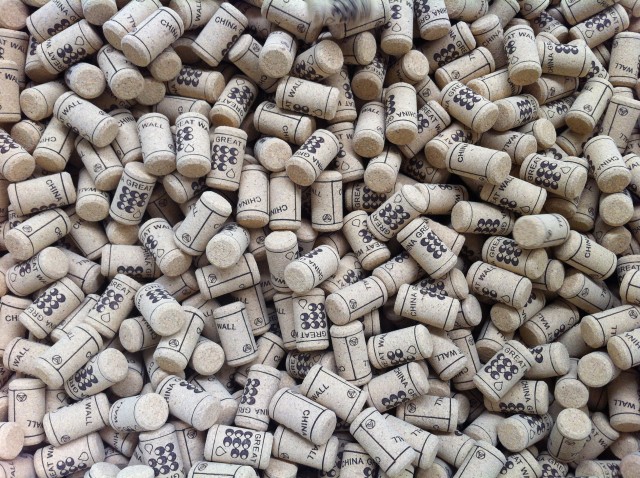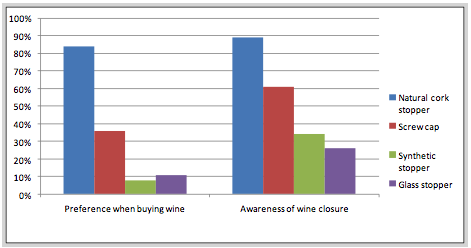Date£ļ
2014-08-01 09:06 Source£ļ
thedrinksbusiness Author:
Gabriel Savage Translator:
The cork sector has hailed two new surveys that it claims signal a strong preference for wines closed under natural cork in the US and China, two of the category's major growth markets.

Corks destined for Great Wall, one of China's largest wine brands, come off the production line
Analysis by the Cork Quality Council of Wine & Spirits Magazine's Top 50 Restaurant Brands 2013, which was based on the 10 best-selling wines across 218 US restaurants, found that 90% of the featured brands used cork as their primary closure. The number of wine sealed with cork was 21% higher than the proportion that featured in the listing 10 years ago.
In addition, the CQC notes that the median price for a brand sealed under cork was $80, compared to $51 for those using screw cap and $41 for wines featuring a synthetic closure.
The Portuguese Cork Association (Apcor)-backed campaign 100% Cork added further weight to these results by using Nielsen Tracking Survey data for the US off-trade covering the four weeks to the end of April 2014.
The survey showed that sales of premium wine (defined as those averaging more than $6 per bottle during the last six months) sealed with cork outperformed sales of wine closed with artificial options at all retail price points.
Of the top 100 premium brands, as recorded by Nielsen, the proportion sealed using cork has risen by 36% compared to 2010. As with the on-trade, cork-closed wines also attracted a higher median price tag: $12.87, compared to $8.81 for those sealed using other closures.
"The results from these two national surveys demonstrate why it is in the wineries"best economic interest to use cork closures,?said Peter Weber, executive director of the Cork Quality Council. "Whether it is in a restaurant or at a retail outlet, wine consumers overwhelmingly and consistently choose wines that are sealed with natural cork."
However, the premium slant to both these surveys, as well as the dominance of red wine on the Top 50 Restaurant Brands list, does not offer a fully representative picture of the wine market.
Speaking to the drinks business earlier this year, Francoois-Xavier Denis, deputy general manager of synthetic closure firm Nomacorc, claimed that his company alone holds a 35% share of the still wine market in the US, its largest customer.
Nevertheless, he acknowledged, "We're biggest below 6 pounds,"adding: "The closure market is segmented by price, that's a fact."
This year saw the US overtake France to become the world's largest wine market by volume, according to figures released in May by the International Vine and Wine Organisation (OIV).
Meanwhile in China, Apcor commissioned a survey that was carried out by CTR Market Research across 2,001 consumers aged between 18 and 64 in the cities of Beijing, Shanghai, Guangzhou and Chengdu.

Results of a closure survey among Chinese consumers. Source: CTR Market Research
The survey found that 85% of respondents believed that wines using a cork stopper were of high quality, while 84% said they would prefer to purchase wines featuring a natural cork stopper.
Commenting on the results, Su Ben-Cai, research director at CTR Market Research, observed: "The findings of our survey show that natural cork stopper is the most well known and regarded closure amongst Chinese wine consumers. We could also see a clear roadmap of its high awareness and positive perception leading to a strong tendency of advocacy."
Again, however, this picture of the Chinese wine market does not address the strong performance by screw cap-dominant Australia here, the second biggest exporter to China after France.
As reported in the drinks business February 2014 issue, estimates by screw cap manufacturer Amcor suggested that this type of closure currently holds an 83% share of the Australian and New Zealand wine markets, a figure which the company expects to increase to 91% by 2016.
In addition to the growth of its own domestic production, China has seen a doubling in the number of consumers buying imported wines during the last three years.
Nevertheless, Carlos de Jesus, communications director for Amorim, the world's largest producer of natural cork, highlighted the commercial significance of these reports for wineries deciding which closure to use.
"Combined, these two studies paint a very clear picture of the importance that cork has for winemakers selling, or looking to sell, in two of the world's most exciting wine markets,?he observed.
As a result, summed up de Jesus, "these two markets will be instrumental in shaping the evolution of the wine trade in the foreseeable future. These figures make a very robust case for cork as good for wine -and good for the business of wine."